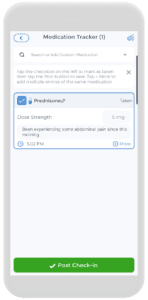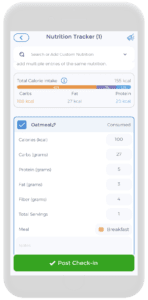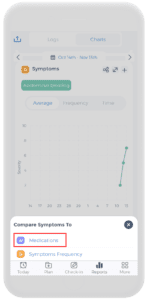
As we deal with various health challenges that are thrown at us throughout life, we must also deal with the consequences of taking certain medications and treatments. We are incredibly fortunate to live in a time of advanced technology and scientific knowledge regarding new and effective treatments for many of the common diseases we face as a society. Prednisone has become a widely prescribed steroid across a wide range of inflammatory illnesses. The nonspecific and general immunosuppressive nature of the drug makes it an ideal treatment choice. Unfortunately, no medication comes without its side effects, and prednisone is no exception to this rule. One specific effect of prednisone is what has now come to be known as the “prednisone apple belly”.
The prednisone apple belly refers to the stubborn abdominal weight gain reported by prednisone users. This prednisone belly bloat can be quite frustrating; nevertheless, taking prednisone is often not optional.
Steroids can even be the difference between survival and fatality. Fortunately, there are many ways to deal with and control this stubborn side effect of prednisone with the use of health trackers. The CareClinic app can help you stay one step ahead of potentially troubling consequences and help keep them under control! [1][2]
What is Prednisone Apple Belly?
Defining Corticosteroids
You’ve likely heard the term ‘corticosteroids’ at least once in your life – maybe you have even been prescribed these popular drugs in the past. The term corticosteroid refers to a molecule that closely resembles cortisol1,2. Cortisol is a natural hormone produced by the adrenal glands in your kidneys and has well-known roles as your body’s primary stress hormone. Moreover, corticosteroids have significant implications as anti-inflammatory agents, especially in rheumatoid diseases such as rheumatoid arthritis, lupus (see how long flares last), and vasculitis. Some corticosteroids that are commonly used include cortisone, methylprednisolone, and prednisone.
Prednisone as a Corticosteroid
In fact, prednisone is the most commonly used type of steroid to treat these rheumatologic diseases – these are diseases that are marked by inflammation and pain in the joints, muscles, and ligaments. Its mechanism of action is a little more technical in terms of biology. Put in simple terms, prednisone enters our cells and inhibits the production of proinflammatory molecular signals called cytokines. Without these signals, our body cannot recruit or induce the migration of certain immune cells that cause inflammation. Consequently, inflammation – and many of the symptoms that come along with it – are decreased2.[3][4]
What Diseases Require Prednisone as a Medication?
Due to the anti-inflammatory and immunosuppressive functions of prednisone, the steroid is often used to treat inflammatory conditions2. What you’ll notice as you read about these diseases below is that many of them share the same characteristic symptoms. As I’m sure you have gathered, this is because all the diseases listed below have implications in inflammation and immune response, overall corresponding with the functions of prednisone. Keeping this in mind, some common disease targets of prednisone are:
Rheumatoid Arthritis
Rheumatoid arthritis is a chronic autoimmune condition in which your body’s immune system attacks the tissues lining your joints. These joints include your fingers, hands, wrists, ankles, knees, and toes. Some symptoms of rheumatoid arthritis include:
- Pain, stiffness, and swelling in multiple joints (especially after sitting in one position for long periods of time)
- Fatigue
- Feeling weak
- Fever
While there isn’t necessarily an exact known of rheumatoid arthritis, there are certain treatments that can help alleviate the symptoms. Along with prednisone, some common treatment options include physical therapy, lifestyle changes, and in certain situations, surgery. Click here if you are interested in learning more about what causes arthritis flare-ups.
Asthma
Asthma is defined as a chronic inflammatory disorder of your respiratory airways. The condition generally presents as episodes or attacks in which your airways begin to swell and consequently narrow. As a result, you may feel tightness in your chest and difficulty breathing that can range from mild presentation to life-threatening. Some symptoms of asthma include:
- Wheezing
- Shortness of breath
- Coughing
- And chest tightness
Asthma is most commonly treated using inhaled steroids, such as prednisone! Once again, a direct cause is not well known; however, there is speculation of a genetic component. In fact, the heritability of asthma is reported to range from 35% to 95%.
Multiple Sclerosis (MS)
Like the prior 2 conditions we have talked about, multiple sclerosis, also known as MS, is another autoimmune condition. In MS, the immune system attacks the myelin, a protective layer of fat surrounding nerve fibers in your nervous system. Subsequently, communication between your brain and the rest of your body is disrupted. In its harshest form, MS can cause permanent damage and deterioration of your nerves.
While symptoms can vary, some common presentations of MS include:
- Numbness or weakness in one or more limbs
- Electric shock-like sensations in certain neck positions and movements
- Tremors
- Lack of coordination
- Impaired vision
- And slurred speech
To reduce inflammation of the nerves, corticosteroids are a common treatment for MS. While the condition cannot be cured, this form of treatment can help minimize symptoms.
Inflammatory Bowel Disease (IBD)
Inflammatory bowel diseases – a term referring mainly to Crohn’s disease and ulcerative colitis – are conditions consisting of chronic inflammation of your gastrointestinal tract. Once again, there does not seem to be a direct or linked cause to IBD; instead, there seem to be genetic and environmental dispositions that can put you at a higher risk for the disease6. Some symptoms of IBD include:
- Abdominal pain
- Diarrhea/constipation
- Bloating and gas
- Loss of appetite
- Nausea and vomiting
Along with corticosteroids, antibiotics, immunomodulatory agents, and bowel resection are common courses of treatment suggested by physicians. Overall, all these forms of treatment aim to keep the immune system in check and relieve symptoms.[5][6]
Side Effects of Taking Prednisone
As a treatment, the uses and benefits of prednisone are widespread and various. It really does work! However, like with most treatments, taking prednisone can come with its own list of less-than-ideal side effects.
These digestive symptoms can overlap with other inflammatory conditions. When you have ongoing bloating with stomach pain, it could be different things causing it. Sometimes a bloated stomach with diverticulitis has similar symptoms that need different treatment.
is, for most people at least, the benefits outweigh the cons. While they can be annoying, side effects are often a better choice to deal with as compared to the symptoms of some of the diseases we’ve already discussed. In some ways, they’re a necessary evil.
Moreover, the side effects you experience can actually be influenced by the method by which you are taking the corticosteroid.
Stomach Bloat
When you take prednisone orally, it becomes difficult to target the drug to a specific area. Thus, oftentimes your entire body is effective as opposed to a particular area. As such, this form of administration is the most likely to cause significant effects depending on your dosage. Some of these effects include:
- For example edema (fluid retention) in your lower legs
- Hypertension – high blood pressure (download a log sheet from here)
- Psychological effects – including, mood swings, delirium, memory, and behavior deficits
- Stomach aches and stomach bloating
- Weight gain in the abdomen, face, and neck
With long-term usage of prednisone, side effects can become more serious and begin to affect your vision and organ functions. Some of these consequences include:
- For example, glaucoma – elevated eye pressure
- Cataracts
- Thinning and increased fragility of your bones (osteoporosis)
- Such as suppressed adrenal gland hormone production
Adverse Effects of Inhaled, Topical, and Injected Prednisone
When inhaled, prednisone can sometimes deposit in your mouth or throat. This can result in fungal infections and hoarseness. Topical prednisone, on the other hand, can lead to skin thinning, lesions, and in some cases, even acne. Finally, injected prednisone causes temporary side effects at the site of injection8. These include
- Such as skin thinning
- Loss of color in the skin
- Post-injection flare
- Facial flushing
- For example insomnia
- High blood sugar (printable blood sugar log)
h2, h3 { display: inline-block; }
Using a Medication Tracker to Stay One Step Ahead

Prednisone Apple Belly: What is it?
Weight gain is one of the most frequently reported side effects of prednisone usage. In general, this weight gain in hard to control and can leave a person feeling helpless and with a lack of autonomy. Additionally, an increase in appetite and adipose tissue redistribution to the face, trunk, and back can make the situation feel even more out of hand. Furthermore, stomach bloating is another side effect of prednisone that doesn’t exactly help the situation, and instead, just reinforces it. It is important to note, however, that these side effects are generally only recorded in patients with long-term usage of prednisone.
Anecdotally, this weight gain is known as the prednisone apple belly, due to the tendency of fat distribution to increase around the middle of the body. Needless to say, it can be a difficult journey learning to accept and control the weight gain you may experience while taking prednisone. When it comes to understanding why we experience this bloat, the exact mechanism is a little more difficult to pinpoint, but let’s not get too caught up in the logistics here. The take-home message is this: you can maintain a level of control. I promise it can be done! The right combination of maintenance techniques and tracking can help you feel better, both physically and mentally.
How to Prevent the Prednisone Belly Bloating
There are things in our lives that we can control the occurrence of, and things in our lives that we can’t. Prednisone belly bloat just happens to fall into the latter category, but that’s nothing to fret over! There are many techniques and strategies available that can help manage the prednisone apple belly. Moreover, while you may not be able to completely control or eliminate its partner symptoms – appetite and metabolism changes – you can at least get a good feel for how you are responding to the medication and how to optimize for the best results!
Track your Nutrition
What you put into your body is incredibly important to keep you feeling your best! Make sure to keep track of what you’re eating and when. This will help you better understand your personal eating habits and pinpoint certain patterns you may decide are better than others, or vice versa! Introducing fiber into your diet is one especially helpful way to help you lose weight.
Fiber helps regulate your bowel to decrease bloating, helps you feel full for longer, and manages your insulin response. All of these, in turn, affect your metabolism and appetite in a weight loss program in a healthy and efficient manner.
Some good sources of fiber include:
- For example, Beans and legumes
- Flax seeds
- Asparagus
- Such as Brussels sprouts
- And oats

Be careful not to focus on the numbers. Tracking your nutrition is a means to help you gain awareness surrounding your habits. It’s not a numbers game – don’t make it one!
The CareClinic app is a one-stop shop for all your nutrition tracking needs! The built-in nutrition tracker is the perfect place to start monitoring your food intake and getting you on the right track. CareClinic offers not only a variety of pre-programmed food items but your own custom entries as well.
Track not only the calories but the carbohydrates, proteins, fats, and more you are ingesting each day! Additionally, CareClinic allows you to track the time and type of meal you are having for a more comprehensive picture of your eating habits.
Choose your Calorie-Free Drinks Carefully
While zero-calorie “diet” drinks appear to be the perfect drink to lose weight, the truth is, these drinks are packed to the brim with artificial sugars. You’re better off consuming a natural calorie-free drink, such as a seltzer or sparkling water, instead! Feel free to infuse your drink with fruits and vegetables for an extra touch10.
Limit your Snacking
Impulse is what generally drives snacking – not hunger. Partaking in it can be a real killer of weight loss if done for the wrong purposes. As such, setting a simple rule for yourself is often sufficient to help with your weight management.
While the habit can be unhealthy, it is always important to listen to your body. If you feel the urge to snack, opt for something healthier and fibrous. Or maybe try a drink. Oftentimes, we mistake thirst for hunger – drinking a tall glass of water or some tea might just do the trick. While restraint and control are necessary, it is vital to learn the balance between listening to your body and your impulses.
Never Shop on an Empty Stomach (Trust Me – Just Don’t)
The most effective way to avoid eating unhealthy food or snacks is to not have it anywhere near you10. Summarized: don’t buy them! And the best way to do this is to not shop hungry. Shopping with a full and content stomach makes you significantly less likely to reach for a bag of chips or those danish pastries you’ve been eyeing. Plan ahead of your shopping. Walk in with a list after a good meal and stick to it! [7]
Minimizing Prednisone Apple Belly

CareClinic offers you a variety of visualization options, analysis features, and charts right are your fingertips. Thus, CareClinic helps you develop a thorough and complete understanding of your health at any given moment. This includes how it changes and patterns you may recognize through your journey using prednisone.
More specifically, the diary feature sets apart the CareClinic app by giving you a blank slate to log your eating habits and side effects to help manage side effects you might experience due to prednisone. This can help you determine if the prescription is working well in your personal experience and adjust your treatment plan accordingly.
Throughout our discussion about prednisone and bloating, I hope you understand how important it is to note any abnormality you experience while taking prednisone. It’s essential to stay one step ahead to minimize these adverse effects, or even halt them altogether. CareClinic is a wonderful tool to make this process as simple as possible. The correlation charts and reports are great, easy-to-understand sources of information that visually and directly allow you to see the relationship between symptoms you experience and your medication tracking.
The takeaway: CareClinic has several features that help you have a positive and healthy experience with prednisone. Overall, it is a great starting point or addition to your health journey and aims to help you feel your best!
References
- Cleveland Clinic. (2020, January 20). Corticosteroids. Retrieved from: https://my.clevelandclinic.org/health/drugs/4812-corticosteroids
- Cleveland Clinic. (2022, February 18). Rheumatoid Arthritis. Retrieved from: https://my.clevelandclinic.org/health/diseases/4924-rheumatoid-arthritis
- Mims, J. W. (2015). Asthma: definitions and pathophysiology. International Forum of Allergy & Rhinology, 5(S1), S2–S6. https://doi.org/10.1002/alr.21609
- Mayo Clinic. (2022, January 07). Multiple sclerosis. Retrieved from: https://www.mayoclinic.org/diseases-conditions/multiple-sclerosis/
- Cleveland Clinic. (2021, March 05). Inflammatory Bowel Disease (Overview). Retrieved from: https://my.clevelandclinic.org/health/diseases/15587-inflammatory-bowel-disease-overview
- Spies, C.M., Cutolo, M., Straub, R.H., Burmester, G.-R., & Buttgereit, F. (2011). Prednisone chronotherapy. Clinical and Experimental Rheumatology, 29(Supple. 68), S42-S45. https://www.clinexprheumatol.org/article.asp?a=5274
- Mayo Clinic. (2020, December 16). Prednisone and other corticosteroids. Retrieved from: https://www.mayoclinic.org/steroids/art-20045692
- Kapugi, M., & Cunningham, K. (2019). Corticosteroids. Orthopaedic Nursing, 38(5), 336–339. https://doi.org/10.1097/nor.0000000000000595
- Purse, M. (2020, August 14). 6 Tips for Fighting Medication-Induced Weight Gain. VeryWell Mind. Retrieved from: https://www.verywellmind.com/diet-tips-for-weight-loss-380695
References
- “ILD Nutrition Manual: Prednisone and Weight Gain | UCSF Health”. https://www.ucsfhealth.org/education/ild-nutrition-manual-prednisone-and-weight-gain/
- “Managing Prednisone Side Effects”. https://health.clevelandclinic.org/prednisone-side-effects
- “Prednisone – StatPearls – NCBI Bookshelf”. https://www.ncbi.nlm.nih.gov/books/NBK534809/
- “Corticosteroid-induced lipodystrophy”. https://en.wikipedia.org/wiki/Corticosteroid-induced_lipodystrophy
- “Prednisone for MS | Uses, Side Effects, and More | Multiple Sclerosis News Today”. https://multiplesclerosisnewstoday.com/prednisone-ms/
- “Prednisone | Crohn’s & Colitis Foundation”. https://www.crohnscolitisfoundation.org/patientsandcaregivers/ibd-medication/prednisone-0
- “The One Food That Can Spike Weight Loss”. https://time.com/3709904/fiber-weight-loss/


